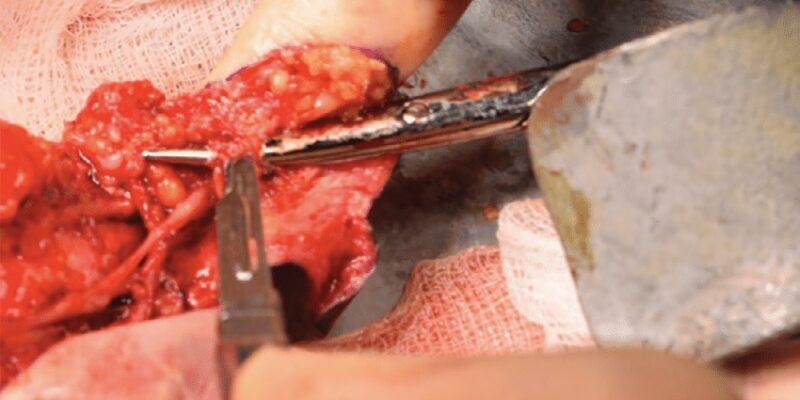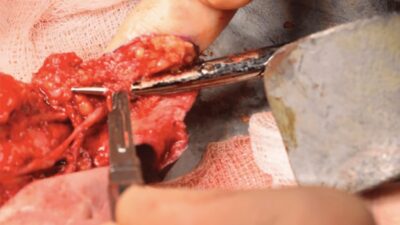
In the surgical world, every tool matters. While some instruments are designed for versatility, others are tailored for specific, highly delicate tasks. Tenotomy scissors fall into the latter category. Known for their slim profile and precise cutting ability, these scissors have earned a permanent place in operating rooms across a wide range of specialties.
Although they may look like just another pair of surgical scissors, tenotomy scissors are the result of thoughtful design, careful material selection, and skilled craftsmanship. Their application in areas such as orthopedics, ophthalmology, and reconstructive surgery makes them one of the most reliable precision instruments in modern medicine. This article examines their unique features, clinical uses, proper handling techniques, and future innovations that will likely shape how surgeons use them in years to come.
The Unique Design of Tenotomy Scissors
Why Shape Matters
Tenotomy scissors are instantly recognizable due to their long, narrow blades that taper to a fine point. This design is not just about appearance. The elongated blades allow surgeons to reach into confined surgical spaces that would otherwise be difficult to access. The fine tips make it possible to perform delicate dissections with accuracy, reducing the likelihood of harming nearby tissues.
The blades are often curved, which enhances maneuverability. A curved blade can adapt to the natural contours of tissue, giving surgeons the ability to make precise cuts even at challenging angles. In situations where accuracy is critical, such as cutting tendons close to nerves, this design provides confidence and control.
Straight-bladed versions also exist and are useful when surgeons require clean, linear incisions. The availability of both straight and curved models ensures that surgeons can select the right tool for the specific demands of a procedure.
The Role of Materials in Performance
The material used in surgical scissors has a direct impact on sharpness, longevity, and handling. Most tenotomy scissors are crafted from stainless steel because of its corrosion resistance and ability to withstand frequent sterilization. This is especially important in modern operating environments where instruments must be sterilized repeatedly without losing their edge.
High-carbon steel versions are known for exceptional sharpness and edge retention. However, they require strict maintenance since carbon steel is more prone to rust if not cared for properly. Titanium scissors are another option. They are lighter, which reduces hand fatigue, and they resist corrosion well, making them a popular choice for surgeons performing lengthy procedures.
The material also influences tactile feedback. Surgeons rely on how instruments “feel” in their hands, especially during precise maneuvers. Instruments made from quality steel or titanium provide the right level of resistance and smoothness, which translates into more confident cutting.
Craftsmanship and Quality Control
Tenotomy scissors must be manufactured with meticulous attention to detail. The alignment of the blades, the sharpness of the edges, and the balance of the handles all affect how the instrument performs during surgery.
Handcrafted scissors often undergo multiple stages of inspection to ensure flawless performance. These instruments usually provide sharper, cleaner cuts and tighter tolerances than mass-produced options. The difference may seem small, but in a surgical setting, where every millimeter matters, craftsmanship can influence the outcome of a procedure.
High-quality manufacturers often back their instruments with warranties. This reflects their confidence in the durability of the product and reassures medical professionals that their tools will perform reliably over time.
Clinical Applications of Tenotomy Scissors
Orthopedics
In orthopedic surgery, tenotomy scissors are used frequently to cut or release tendons. Procedures such as Achilles tendon repair, carpal tunnel release, or trigger finger correction rely on the accuracy of these instruments. By providing a clean incision with minimal trauma, tenotomy scissors help preserve the strength and function of surrounding tissues.
Ophthalmology
Eye surgeries require instruments that combine precision with delicacy. In strabismus surgery, tenotomy scissors are essential for adjusting the muscles that control eye movement. The fine tips allow ophthalmologists to work within extremely limited spaces without damaging delicate structures.
Plastic and Reconstructive Surgery
Plastic surgeons often turn to tenotomy scissors during procedures that involve reshaping or repairing tissue. These scissors make it possible to perform intricate dissections around sensitive areas, minimizing scarring and supporting faster healing. In reconstructive surgeries, especially those involving delicate facial structures, their precision is invaluable.
Neurosurgery
Although less common, neurosurgeons sometimes employ tenotomy scissors when working around nerves or blood vessels where accuracy is critical. Their slender design helps surgeons operate in spaces where conventional scissors would be too bulky.
Comparing Tenotomy Scissors with Other Instruments
Surgical teams often work with a wide range of cutting tools, each designed for specific tasks. Understanding the differences helps explain why tenotomy scissors are indispensable.
- Standard surgical scissors are suitable for general cutting but lack the precision required for tendon work or delicate dissections.
- Blunt dissection scissors are designed to separate tissues rather than cut, which is useful in some contexts but not in situations requiring exact incisions.
- Electrosurgical tools provide the added function of cauterizing while cutting, but they generate heat that can harm surrounding tissue.
Tenotomy scissors occupy a middle ground. They deliver precise, clean cuts without generating heat or excessive trauma, making them the best choice for specific tasks where control is paramount.
Mastering Technique
Proper Grip
Correct handling is essential for making the most of tenotomy scissors. The thumb and ring finger typically rest in the loops, while the index finger supports and guides. This grip allows for steady control and reduces unnecessary strain. A balanced hold ensures smooth cutting motions and minimizes fatigue during lengthy operations.
Cutting Techniques
Surgeons are trained to use gentle, deliberate motions rather than force. The tip of the scissors is reserved for fine, delicate cuts, while the length of the blades is better suited for slightly larger incisions. Control over depth is vital, particularly when operating close to nerves or blood vessels.
Practicing these techniques in simulation labs helps surgeons build confidence and muscle memory, ensuring they can reproduce the same level of precision in real surgeries.
Safety Protocols
Patient safety depends on more than just surgical skill. Instruments must be sterilized properly before every procedure. Sharpness should be checked frequently to avoid tissue trauma from dull blades. Surgeons also maintain visibility by using retractors or adjusting lighting to reduce the risk of unintended cuts.
Equally important is communication within the surgical team. When everyone understands the plan and the role of each tool, the chance of errors decreases significantly.
The Future of Tenotomy Scissors
Technology Integration
Advances in technology are shaping the future of surgical instruments. Tenotomy scissors may soon feature built-in sensors that provide real-time feedback on tissue resistance, helping surgeons know exactly how much pressure to apply. Augmented reality systems are also being developed to project visual guidance directly into the surgeon’s field of view, further increasing accuracy.
Customized Instruments
With the rise of personalized medicine, there is growing demand for instruments designed specifically for individual surgeons or procedures. 3D printing now makes it possible to create scissors with customized grips, blade lengths, or curvatures, enhancing both surgeon comfort and procedural outcomes.
Training the Next Generation
Residency programs are adapting to these advancements by incorporating training on both traditional and modern instruments. Simulation labs allow young surgeons to practice using tenotomy scissors in controlled environments, while mentorship programs provide valuable feedback from experienced professionals. This combination of training methods ensures the next generation is equipped to use these tools effectively.
Final Thoughts
Tenotomy scissors may appear small and simple, but their role in surgery is significant. Their design, choice of materials, and precision craftsmanship make them indispensable across multiple specialties. From repairing tendons to adjusting delicate eye muscles, they allow surgeons to perform procedures with accuracy and confidence.
As surgical technology evolves, tenotomy scissors are likely to become even more advanced, integrating smart features and personalized designs. Yet their fundamental purpose remains the same: to provide clean, controlled cuts that support better patient outcomes. In many ways, they are a reminder that in surgery, success often depends not on the most complex tool, but on the one that delivers precision exactly where it is needed.











